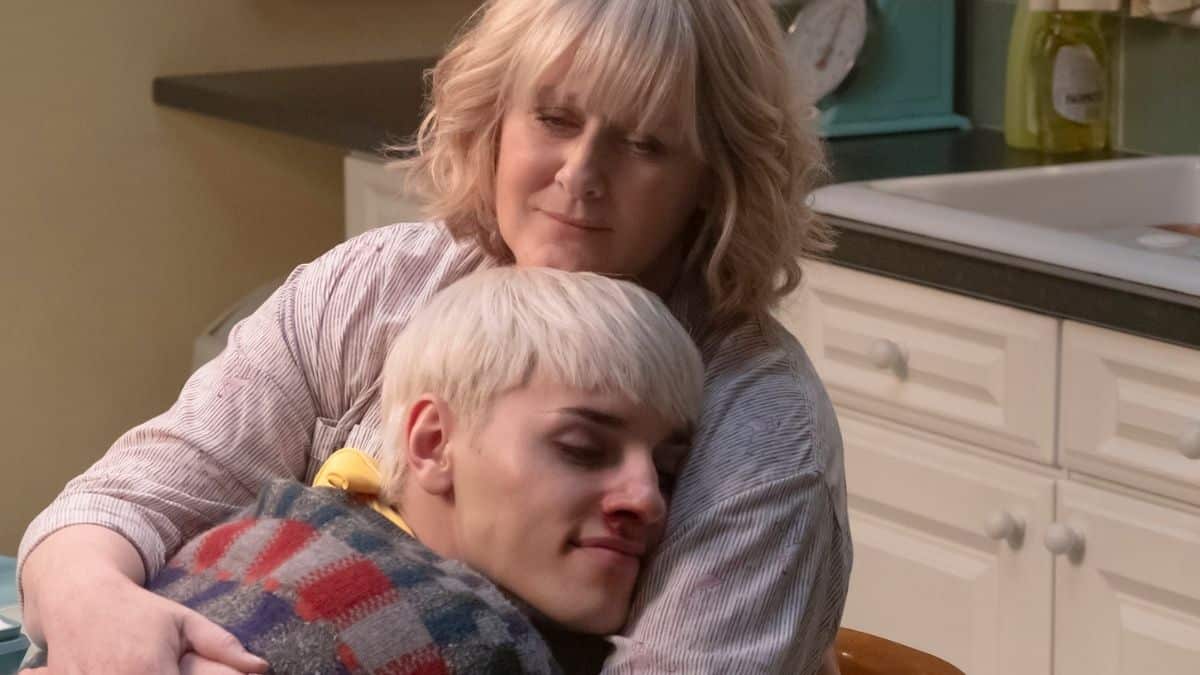
Jamie New knows exactly who he wants to be. This teenager from Sheffield, England wants nothing more than a life filled with freedom, glamour and towering high heels.
At sixteen years old, he suffers through career classes that serve him no purpose and a school that’s laden with homophobia.
Everybody’s Talking About Jamie begins with a strong musical number, Don’t Even Know It, and quickly translates into Jamie’s sixteen birthday celebration. His caring mother gifts the young, gay boy his first pair of heels.
Then, it slows down to an inspirational, emotional number called Wall In My Head which features lyrics like, “Over the wall, I see my future standing tall” and “I’ll keep on climbing and climbing and climbing, this wall in my head.”
Within the first few minutes, viewers can see that Jamie has a strong support system, mostly at the hands of his loving mom (Sarah Lancashire) who has a youthful sense of humor. Jamie also has a fierce best friend in supporting character Pritti Pasha (Lauren Patel). She’s witty and smart, and while she doesn’t fully understand him, she’s willing to try.
It is at this early point in the film where the audience is wondering: Where is this movie going to go? How will this movie divert itself from the other musical dramas that follow a similar storyline? Surprisingly enough, it does it seamlessly. While the musical takes on some Glee-esque territory,
Everybody’s Talking About Jamie takes these unoriginal ideas and creates a stand-out movie with loveable characters, strong songs and a few creative twists.
Creating space for all
Debuting actor Max Harwood glows throughout the movie as the title character. He brings a refreshing wave of youth and authenticity in his portrayal despite having some big shoes to fill.
Everybody’s Talking About Jamie is an autobiographic drama musical based on a West End musical that has starred award-winning actor John McCrea (who went on to star in BBC’s Dracula and Disney Plus’s Cruella) and English performer Layton Williams.
And, before either of the musicals existed, there was the 2011 documentary film called Jamie: Drag Queen at 16. This 56-minute film tells the real-life story of Jamie Campbell and his journey towards becoming a drag queen at a tender age.
This is where Everybody’s Talking About Jamie steers itself in the right direction. The musical drama has a strong sense of reality throughout its tale, refusing to be a heteronormative story of the “good gays” or a tear-jerker sobfest about homophobia. It recognizes the beauty and progression that’s come from the gay liberation movement while refusing to gloss over the lost childhoods and defeat.
Actor Richard E. Grant brings light to this in his musical performance This Was Me, featuring Holly Johnson. Playing Hugo Battersby, by day, and drag queen Loco Chanelle. by night, Grant takes baby gay Jamie underneath his wings. He helps him explore why he wants to be a drag queen and walks him through the process of developing an alter-ego.

At Hugo and Jamie’s first meet, the movie takes a break from its contemporary story. This Was Me marks one of the strongest points in the movie, surprising many as it’s an original song to the movie. As the song plays on, the screen flashes through pivotal moments during the fight for gay rights through a variety of clips, walking Jamie through the aging drag queen’s personal battle.
As the moment comes to an emotional end, Jamie rushes out of the room and reflects to his friend: “The drag queens in the olden days, they weren’t just queens, they were warrior queens.” He acknowledges that “they had it hard” and says that he wants to “just dance around, and show off and get famous.”
While Pritti successfully rationalizes with her peer and explains that there’s nothing wrong with Jamie craving acceptance, this conversation is one that requires such a keen sense of self-awareness. One that’s rarely the center of attention in coming-of-age stories.
Adding in some creative elements
In addition to the movie’s strong subject and characters, it also offers many creative elements. Throughout the movie, it jumps between past and present in a complimentary way. It experiments with both figures on the screen, both old and young.
This technique is used to tease its audience, revealing small bits of information over time, which eventually leads to a climatic happening. This happens with Grant’s musical number and again with Jamie’s flashbacks to the abuse he suffered from his father throughout his upbringing.
Everybody’s Talking About Jamie also works in an eighties-inspired musical number by Jamie’s homophobic career teacher. It transforms her into a textbook villain, painting her black-and-white in an otherwise color scene. Given the song’s retro style and the intensity of the scene, this cartoonish movie effortlessly worked for the musical.
What made Everybody’s Talking About Jamie great was its commitment to breaking the status quo and stepping outside of the mold. While the movie had many traditional coming-of-age tropes, the creators’ comfortability and awareness of the subject matter shone.
The movie addressed these tropes in ways that developed the story, rather than overshadowed it. As Jamie said towards the end, “I’m not a superhero, I’m just a boy in a dress,” and that’s exactly what the movie allowed him to be.
Everybody should be talking about Jamie. Why? Because it’s a must-watch.
Everybody’s Talking About Jamie is currently streaming on Amazon Prime.